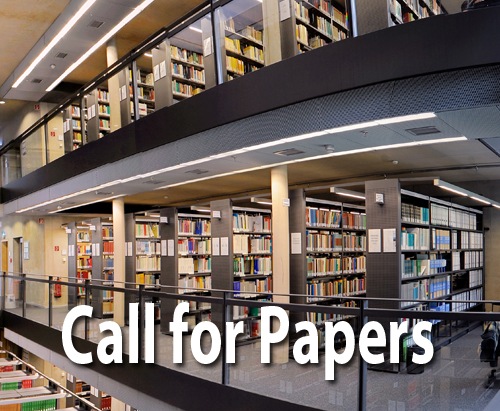“The one test of the really weird is simply this—whether or not there be excited in the reader a profound sense of dread, and of contact with unknown spheres and powers.”
—H.P. Lovecraft, “Supernatural Horror in Literature” (1927)
“This whole world’s wild at heart and weird on top.”
—David Lynch, Wild at Heart (1990)
For H.P. Lovecraft, the weird conveys “a subtle attitude of awed listening, as if for the beating of black wings or the scratching of outside shapes and entities on the known universe’s utmost rim.” Taking its cue from Lovecraft’s enduringly influential conceptualization, this conference examines and broadens the notion of weirdness towards an ecology and geography of the weird as a new field of theoretical and practical resonances. What we call The American Weird comprises not only an aesthetics evoked by literary practices or films from the genres of the gothic or horror, but also by other forms of cultural expression, such as music, sculpture, photography, and performance art. The conference theme also aims to address new theoretical perspectives on humanity’s relation to the world, perspectives that have recently been proposed by what might be called the “new demonologists” (e.g. Graham Harman, Eugene Thacker, and others).
Against the backdrop of new ontologies and epistemologies of the weird, the following questions will form the conceptual backbone of The American Weird: What are the ecologies and geographies of the weird today, and how are they conceived, perceived, and reworked? Which strands of contemporary critical theory and philosophy have engaged in a dialogue with the discourses of and on the weird, and what is specifically “American” in The American Weird? If weirdness is more than a mere index of parody and/or subversion, how might one conceive of a politics or an ethics of the weird?
These and related questions on The American Weird will be explored in a three-day conference at the University of Göttingen. Possible topics, which can come from different genres, historical periods, and/or media include, but are not restricted to:
- American literature from Charles Brockden Brown and Edgar Allan Poe’s short stories to the authors of “the new weird,” like Jeff VanderMeer, China Miéville, and Thomas Ligotti. What are the aspects and intricacies of the literary evolution of the weird in America? What is specifically American about this evolution? What has changed in weird literature since the publication of Lovecraft’s essay on “Supernatural Horror in Literature,” on both a poetic and political level?
- the sculptural work of artists such as Lydia Benglis, Louise Bourgeois, Charles Ray, and others. How does this type of artistic practice negotiate normativities and weirdness? How do the materials, size, and content matter of their art contribute to the way they subvert viewing habits and expectations?
- the music of The American Weird, from the musical instruments of Harry Partch, via artists like Tom Waits or Mike Patton, all the way to the tunes of Joanna Newsom and the “New Weird America” or “Freak Folk” movement, and the protagonists of so-called “outsider music” such as Daniel Johnston or Wesley Willis. What exactly is necessary to make music weird or “outsider”? Is it the actual music, the self-presentation of the artists, their perception (or lack thereof), their non-affiliation with the industry?
- the photography of Diane Arbus, Cindy Sherman, and others. What are the liminal spaces that open up between the camera’s alleged “reality effect” and evocations of weird America and its “freaks”? How does Sherman challenge notions like subjectivity and objectivity and what effects and affects are contained in her “vomit pictures”?
- the eco art, land art, or bio art of Robert Smithson, Joe Davis, and others. How do these practices expand the notion of what counts as art, where it begins and ends? What and where are the locales in which it takes place, grows, and decays? Does the participation of plants or bacteria in a dynamic artwork redistribute agencies in the process of creating art and constitute a truly hybrid mode of being beyond the nature-culture divide?
- the filmic visions of Tod Browning, David Lynch, David Cronenberg, and others, as well as recent TV-series that resonate with the aesthetics of the weird, such as True Detective, The Walking Dead, and Stranger Things. How to film the weird? Is there a moving image of American weirdness?
- the comics and graphic novels of Robert Crumb, Charles Burns, Daniel Clowes, and others. How to picture The American Weird in separate panels and what is specific about this kind of narrating weirdness?
- the different theoretical approaches which assess the cultural productions of The American Weird, from subcultural discourses to contemporary materialism, ecocriticism, and realism. What is the function of the weird as a concept vis-à-vis notions of the uncanny, the grotesque, the abject, and the carnivalesque? What are the milieus, theories, histories, and practices of The American Weird?
We invite scholars of American studies and related fields such as cultural studies, film and media studies, comparative literature, art history, and philosophy to submit a short abstract (approx. 300 words) and a short bio-statement by August 15, 2017 to the conference organizers Julius Greve (julius.greve@uni-oldenburg.de) and Florian Zappe (florian.zappe@phil.uni-goettingen.de). The conference will take place from April 12-14, 2018 at the University of Göttingen and is organized by the North American Section of the English Department in cooperation with the Institute for English and American Studies of the University of Oldenburg.

